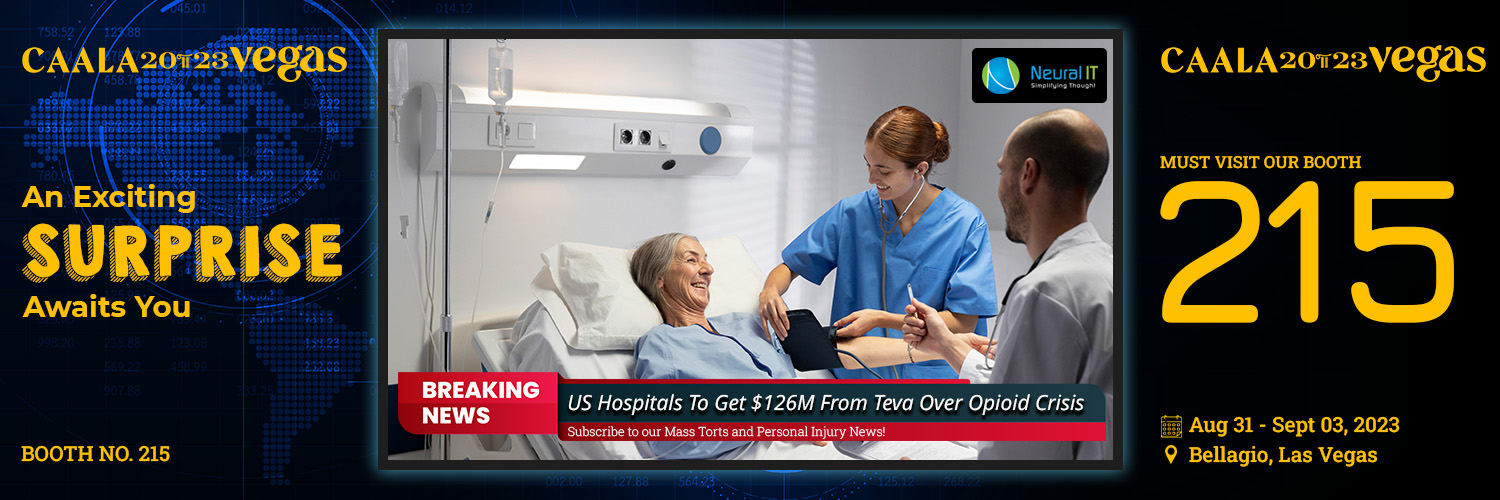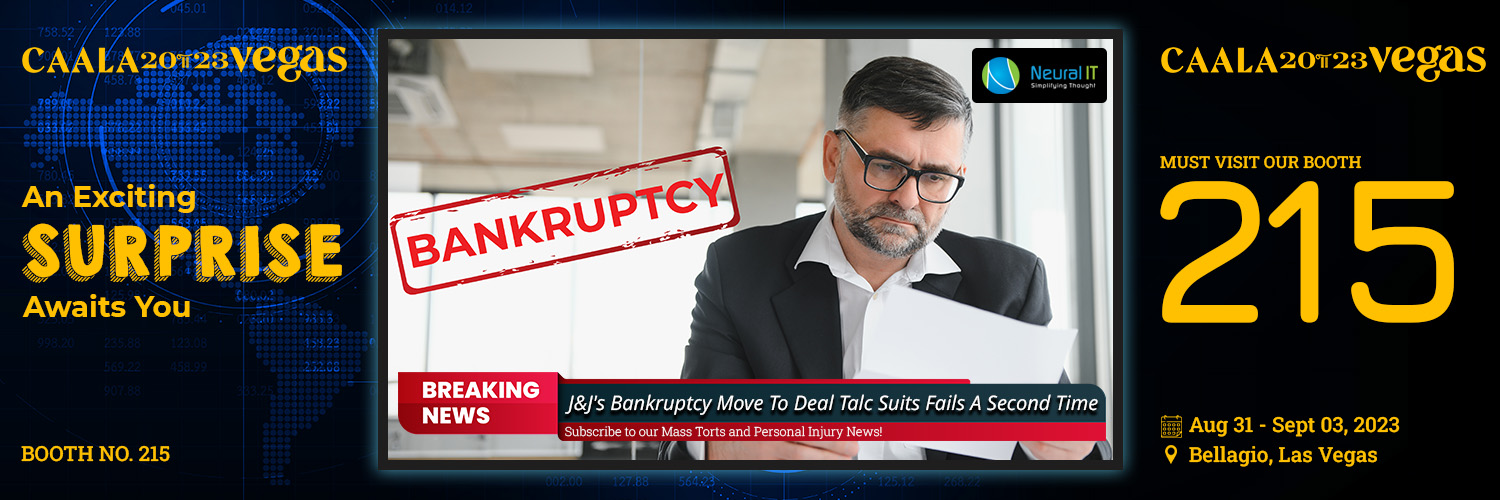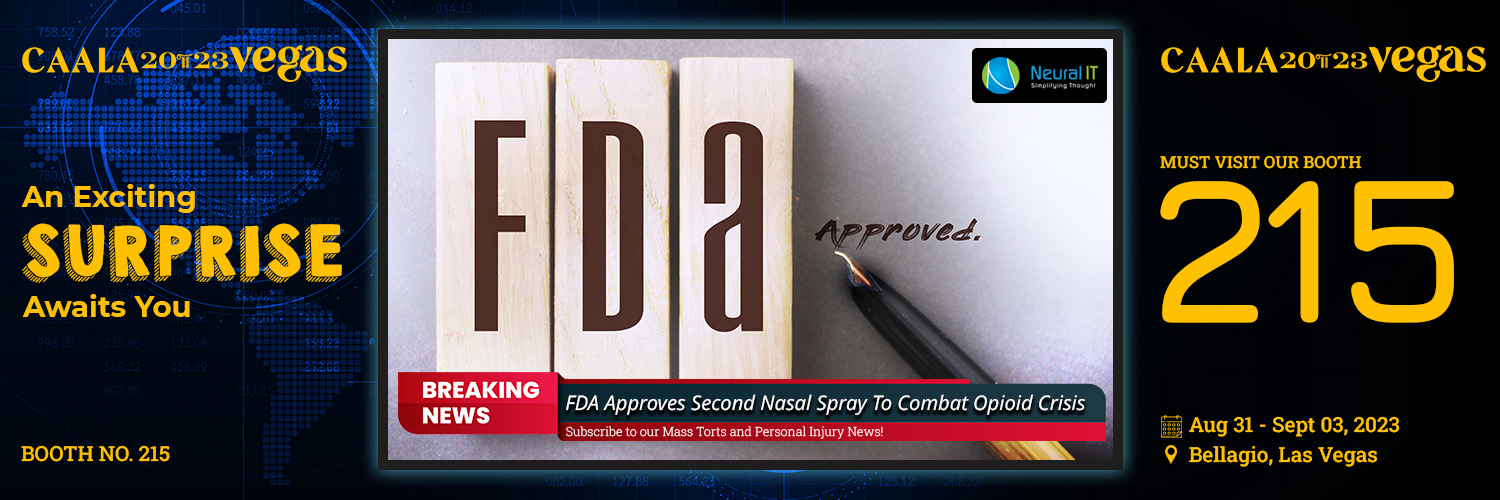Weekly Mass Torts Bulletin 2023-August-7
US Hospitals To Get $126M From Teva Over Opioid Crisis

Teva Pharmaceutical Industries Ltd. has agreed to resolve accusations that its marketing of opioid medications increased the operational expenses of U.S. hospitals by up to $126 million over 18 years.
The Israeli pharmaceutical company Teva also agreed to provide $49 million worth of the overdose-reversing medicine naloxone as part of the proposed settlement, which was announced in Teva's quarterly earnings report.
About 500 American hospitals and other healthcare organisations had sued Teva over opioids, according to Teva, and the deal wouldn't be finalised until the corporation was convinced that enough institutions were willing to participate.
Teva did not specify which hospitals were included by the proposed settlement, and an inquiry for comment was not promptly answered by a company representative. It was not possible to reach the attorney representing hospitals in the opioid mass tort case in Ohio federal court in time for a response.
More than $50 billion in settlements have already been made in opioid-related lawsuits against drugmakers, pharmacies, and distributors, most of which were brought by state, municipal, and Native American tribe governments. One such settlement, a $4.35 billion one, was struck by Teva last year.
The claims contend that drug manufacturers minimised the hazards associated with their products and that distributors and pharmacies failed to stop them from being transferred to the black market.
Fentora, a brand-name fentanyl-based medication sold by Teva, was formerly known as Actiq and is used to relieve breakthrough cancer pain. It also produces generic opioid medications.
According to data from the U.S. Centers for Disease Control and Prevention, there were more than 564,000 opioid overdose fatalities in the country from 1999 to 2020, and the number of overdose deaths has continued to grow since then.
NY Launches Opioid Awareness Campaign

After eight individuals overdosed there in the first week of July, authorities in the US state of New York started a campaign to raise awareness about the growing opioid addiction problem.
The city of Schenectady, which is not far from the state capital of Albany, saw all eight of the fatal overdoses. Authorities responded to at least two further non-fatal overdoses over the subsequent week, according to the Schenectady Police Department.
Law enforcement organised public awareness workshops to teach people how to administer Naxolone, one of two over-the-counter overdose reversal medications authorised by US health regulators, in order to address the substantial increase in overdoses.
The Food and Drug Administration added RiVive, another naloxone hydrochloride nasal spray, to the list of overdose-reversing medications just two weeks later.
The governor of New York launched a state-wide TV campaign to alert citizens about the risks of addiction, particularly those posed by fentanyl, which is largely to blame for the rise in overdose deaths countrywide.
The synthetic opioid fentanyl is said to be 50–100 times more potent than morphine, and overdose deaths from using it are on the rise. According to the most recent data from the US Centers for Disease Control and Prevention (CDC), it includes a 56% rise from 2019 to 2020. According to the CDC's preliminary statistics, the incidence of mortality has increased much more in the intervening years.
Fentanyl is dangerous because it is frequently combined with other illegal substances that are sold illegally, as was the case with the two people who experienced non-fatal overdoses in Schenectady.
Police connected those overdoses to a baggie they all bought that seemed to be cocaine but was really filled with amphetamine and fentanyl. In addition to its media effort, the state of New York is working with NEXT Distro, a non-profit organisation located in New York City that fights overdose fatalities, to broaden access to Naxolone.
The governor stated in a statement that residents of New York continue to experience the effects of fentanyl and the ongoing opioid and overdose crisis in every neighbourhood around the state. We are working around the clock to solve this public health disaster.
She said, we need to do everything we can to save lives, and that starts with educating New Yorkers about the risks associated with these substances and the resources available to assist everyone who has been affected.
J&J's Bankruptcy Move To Deal Talc Suits Fails A Second Time

Johnson & Johnson's second effort to settle tens of thousands of cases over its talc products in bankruptcy was rejected by a U.S. judge, jeopardizing a proposed $8.9 billion deal that would forbid further lawsuits from being brought.
J&J company's second bankruptcy, along with its first, must be rejected, according to a decision made by > U.S. Bankruptcy in Trenton, New Jersey, since the talc claims did not immediately cause it to experience "financial distress."
With regard to the J&J unit LTL, the court said, "This Court smells smoke but does not see the fire." Since the financial crisis must be certain and immediate, LTL is no longer eligible for chapter 11 at this time.
J&J declared that it would challenge the judge's ruling and that it would tenaciously defend itself from frivolous and unfounded legal claims.
J&J's first bankruptcy gambit started in 2021 when it transferred its talc debts to a new business, LTL Management, and then filed for bankruptcy. A U.S. appeals court determined in April that LTL was not in enough financial difficulty to qualify for bankruptcy protection, and as a result, the company's first bankruptcy was rejected.
Asserting that its second effort has garnered more support from plaintiffs for a thorough settlement of ongoing and upcoming lawsuits alleging that J&J's baby powder and other talc products occasionally contained asbestos and caused mesothelioma, ovarian cancer, and other cancers, LTL swiftly filed for bankruptcy again. According to J&J, its talc products are risk free and asbestos-free.
The second bankruptcy of LTL was criticized as a misuse of American bankruptcy law by lawyers for cancer patients and the bankruptcy watchdog of the U.S. Justice Department.
According to the lawyer for cancer patients, the second bankruptcy was intended to prevent juries from hearing the talc complaints. J&J has been attempting to persuade us that a corporation with a $500 billion market value somehow went bankrupt for the past two years. The lawyer said, "It's time for the nonsense to stop and for J&J to take ownership."
According to J&J, the proposed bankruptcy settlement gives cancer claimants a fairer and quicker conclusion than litigation in other courts. J&J likened recent court cases to a "lottery" in which some plaintiffs win big awards while others lose out completely. It claimed that the sum of the verdicts, settlements, and legal bills linked to the talc had totaled roughly $4.5 billion.
In opposition to the $8.9 billion offer, plaintiffs' attorneys claimed that J&J had created the "illusion" of support by entering into agreements with plaintiffs' attorneys, who swiftly signed up numerous clients without actually bringing any legal action against J&J.
According to attorneys opposed to the transaction, J&J could slam down the settlement terms on cancer patients who were against the deal and stop future lawsuits from being brought by persons who contract cancer as a result of using talc by paying the claims in bankruptcy.
The 38,000 lawsuits that were filed before October 2021 have mostly been put on hold as a result of LTL's bankruptcy procedures. During LTL's second bankruptcy, the jury permitted one case to go to trial, which led to a $18.8 million decision in favor of a California man who claimed he had cancer after coming into contact with J&J baby powder.
Governor Of New York Announces $22M To Combat Opioid Crisis

The governor of New York has announced more than $22 million in funding for a variety of opioid addiction prevention, treatment, harm reduction, and recovery services.
With the money from these grants, rehabilitation centers' service offerings will be increased, a new "Connections to Care" campaign will link people in priority groups to resources, and funds will be provided to providers so they may form coalitions to address drug use and prevention in their local communities. Through the State's Opioid Settlement Fund, this cash is being dispersed by the New York State Office of Addiction Services and Supports.
The governor stated that this settlement fund is a chance for us to hold manufacturers and distributors accountable for the devastation they have created. The opioid and overdose crisis has affected far too many New Yorkers. We will keep working with the Settlement Board to deliver this money to the groups and areas that really need it so they can keep helping individuals affected by the opioid crisis and save lives.
Recovery Community and Outreach Centres around New York State will receive more than $12 million in funding to help their efforts to connect with people in recovery. Recovery centers provide a non-clinical, community-based environment that is friendly, safe, and drug- and alcohol-free for the whole community. Through skill development, leisure activities, job preparedness, and the chance to interact with individuals facing comparable difficulties, the centers support long-term rehabilitation. Additionally, they offer vital health, wellness, and other support to individuals and families who are undergoing treatment for a drug use problem or who are looking for information and resources about recovery.
Funding was provided to all recovery facilities operating with an annual budget below $535,000 in order to increase it to that amount for two years. To help underserved and high-need populations get connected to care that will support long-term recovery from substance use disorders and general health, including connections to harm reduction, physical and behavioral health services, and connections to transportation, supportive housing programs, and legal services, $6.6 million in annual funding will be given to 11 providers.
The populations that the funded providers will connect with include those who are expecting or recently gave birth, transitional youth or adults between the ages of 18 and 25, people over the age of 55, people who have been diagnosed with or are suspected of having a developmental disability, people who have recently been released from prison, and people who are moving from stabilization and withdrawal services. Each recipient will get $200,000 a year for three years.
FDA Approves Second Nasal Spray To Combat Opioid Crisis

RiVive, a 3 mg naloxone hydrochloride nasal spray, has been given the go-ahead by the U.S. Food and Drug Administration for over-the-counter (OTC), nonprescription use in the treatment of known or suspected opioid overdoses.
Increasing consumer access to naloxone without a prescription is made possible by the agency's approval of this second nonprescription naloxone product. The manufacturer will establish the nonprescription product's pricing and availability schedule.
In the United States, drug overdose continues to be a serious public health concern. Over 105,000 documented death overdoses occurred in the year ending in February 2023, most of which were caused by synthetic opioids, such as illegal fentanyl. The conventional therapy for opioid overdose is naloxone, a drug that quickly reverses the symptoms of an overdose.
The corporation is aware that naloxone is a potent tool to assist in fast reversing the effects of opioids after an overdose, according to the FDA Commissioner. He also stated that the company has naloxone readily accessible, particularly as an authorized over-the-counter medicine, which makes it a vital weapon for defending the public's health. The FDA welcomes makers of different naloxone medications to explore possible nonprescription development programs with the agency. The agency has historically prioritized access to naloxone products.
Data from research provided by the company indicated identical quantities of RiVive enter the bloodstream as an approved prescription naloxone product was used to support the approval of RiVive nasal spray for nonprescription usage. It has been proven that the medication is both safe and effective when used in accordance with its labeling. The maker also offered information demonstrating that patients may use the medication correctly and safely without a doctor's supervision.
When used by people who are dependent on opioids, RiVive nasal spray may cause severe opioid withdrawal, which includes body aches, diarrhea, high blood pressure, tachycardia, fever, runny nose, sneezing, goose bumps, sweating, yawning, nausea or vomiting, anxiety, restlessness, or irritability.
The FDA has taken a number of actions to simplify access to medications that reverse opioid overdoses, reduce unneeded opioid exposure, and stop the emergence of new opioid addiction cases. In an effort to decrease the likelihood of non-medical use, accidental exposure, and overdose, the agency approved the first non-prescription naloxone nasal spray product in March 2023 and the first generic non-prescription naloxone nasal spray product in July 2023. Over the past year, new efforts have been made to expand opioid disposal options.
The FDA remains committed to addressing all aspects of substance use, abuse, substance use disorders, overdose, and mortality in the U.S. through the FDA Overdose Prevention Framework. Priorities of the framework include advancing the development of evidence-based treatments for substance use disorders and safeguarding the public from unapproved, diverted, or counterfeit drugs that pose overdose risks. These priorities are achieved by eliminating unnecessary initial prescription drug exposure and inappropriate prolonged prescribing.
Harm Reduction Therapeutics is permitted by the FDA to sell RiVive without a prescription.

